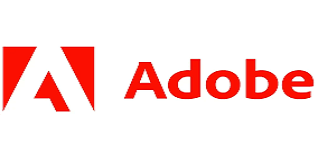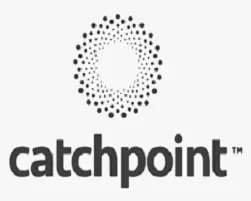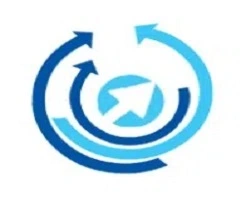
0
+
Google Reviews

0
+
4.4( 2099 Ratings )
The Scrum Certified Product Owner (CSPO) is a certification offered by Scrum Alliance, a globally recognized organization in the field of Agile and Scrum methodologies. CSPO is a role-focused certification that validates an individual’s expertise in Agile product management and their ability to effectively represent the interests of the customer and stakeholders in a Scrum team. The Scrum Certified Product Owner (CSPO) certification is valuable for professionals who want to excel in the role of a Product Owner in Agile and Scrum environments.


Curriculum Designed by Experts
Fundamentals of the Product Owner Role
Working with Stakeholders
Working with the Development Team
Product Ownership with Multiple Teams
Product Strategy
Roadmaps and Release Planning
Customer Research and Product Discovery
1. Understanding Key Groups
2. Segmentation of Customers and Users
3. Product Prioritization Strategy
4. Building Empathy with Customers
5. Describing Users and Customers
6. Generating New Product and Feature Ideas
7. Aspects of Product Discovery
8. Techniques for Building Deeper Customer Understanding
Differentiating Outcome and Output
Defining Value
Ordering Items
Creating and Refining Items
Master in-demand skills with AGILE - CERTIFIED SCRUM MASTER Course Training! Learn Agile principles, team collaboration, and sprint planning. Why Enroll AGILE - CERTIFIED SCRUM MASTER V4 Certification? Boost project efficiency, streamline workflows, and advance your career in Agile management. Get certified today!
Unlock top career opportunities with AGILE - CERTIFIED SCRUM MASTER Course Training! Become a Scrum Master, Agile Coach, or Project Manager. Why Enroll AGILE - CERTIFIED SCRUM MASTER V4 Certification? Enhance team collaboration, optimize workflows, and boost career growth in Agile-driven industries. Get certified today!
Enhance Cloud Adoption with AGILE - CERTIFIED SCRUM MASTER Course Training! Master Agile frameworks to streamline cloud-based projects. Why Enroll AGILE - CERTIFIED SCRUM MASTER V4 Certification? Improve team efficiency, accelerate cloud transitions, and drive digital transformation. Advance your Agile career today!
Boost Scalability and Flexibility with AGILE - CERTIFIED SCRUM MASTER Course Training! Adapt Agile principles to optimize workflows, enhance team collaboration, and scale projects efficiently. Why Enroll AGILE - CERTIFIED SCRUM MASTER V4 Certification? Gain expertise in Agile frameworks and advance your career in Agile project management!
Optimize Cost Management with AGILE - CERTIFIED SCRUM MASTER Course Training! Reduce project expenses, enhance efficiency, and maximize ROI by implementing Agile principles. Why Enroll AGILE - CERTIFIED SCRUM MASTER V4 Certification? Master Agile cost strategies and boost your career in project management!
Enhance Security and Compliance with AGILE - CERTIFIED SCRUM MASTER Course Training! Learn Agile best practices to ensure regulatory compliance, risk management, and secure project execution. Why Enroll AGILE - CERTIFIED SCRUM MASTER V4 Certification? Stay ahead in Agile governance and boost your career growth!



At Radical Technologies, we are committed to your success beyond the classroom. Our 100% Job Assistance program ensures that you are not only equipped with industry-relevant skills but also guided through the job placement process. With personalized resume building, interview preparation, and access to our extensive network of hiring partners, we help you take the next step confidently into your IT career. Join us and let your journey to a successful future begin with the right support.
At Radical Technologies, we ensure you’re ready to shine in any interview. Our comprehensive Interview Preparation program includes mock interviews, expert feedback, and tailored coaching sessions to build your confidence. Learn how to effectively communicate your skills, handle technical questions, and make a lasting impression on potential employers. With our guidance, you’ll walk into your interviews prepared and poised for success.
At Radical Technologies, we believe that a strong professional profile is key to standing out in the competitive IT industry. Our Profile Building services are designed to highlight your unique skills and experiences, crafting a resume and LinkedIn profile that resonate with employers. From tailored advice on showcasing your strengths to tips on optimizing your online presence, we provide the tools you need to make a lasting impression. Let us help you build a profile that opens doors to your dream career.

Infrastructure Provisioning
Implementing automated infrastructure provisioning and configuration management using Ansible. This may include setting up servers, networking devices, and other infrastructure components using playbooks and roles.

Applications Deployment
Automating the deployment and orchestration of applications across development, testing, and production environments. This could involve deploying web servers, databases. middleware, and other application components using Ansible

Continuous Integration
Integrating Ansible into CI/CD pipelines to automate software. build, test, and deployment processes. This may include automating the creation of build artifacts, running tests, and deploying applications to various environments.

The Agile – Certified Scrum Master Course in Bengaluru at Radical Technologies exceeded my expectations. The trainers are industry experts, and the hands-on learning approach made complex concepts easy to understand. I highly recommend this Agile – Certified Scrum Master Institute in Bengaluru to anyone looking to advance their career in Agile project management.
I had an amazing experience with the Agile – Certified Scrum Master Classes in Bengaluru at Radical Technologies. The real-world case studies and practical implementation of Scrum principles helped me gain confidence. The training has truly enhanced my professional skills.
Radical Technologies offers one of the best Agile – Certified Scrum Master Training in Bengaluru. The structured curriculum, interactive sessions, and dedicated support made the learning process smooth and effective. The certification has helped me land a great job opportunity.
The Agile – Certified Scrum Master Online Course in Bengaluru was well-organized, covering every aspect of Scrum methodology. The flexibility of online classes allowed me to learn at my own pace while balancing my work commitments. I highly recommend Radical Technologies for this training.
Enrolling in the Agile – Certified Scrum Master Corporate Training in Bengaluru was one of the best career decisions I made. The trainers were highly knowledgeable and provided in-depth insights into Agile and Scrum methodologies, making it easy to implement in real-world projects.
The Agile – Certified Scrum Master Online Training in Bengaluru at Radical Technologies was a game-changer for me. The live interactive sessions, well-structured course materials, and expert guidance made it an enriching learning experience.
Radical Technologies is the best place for Agile – Certified Scrum Master Certification in Bengaluru. The trainers are excellent, and they simplify even the most complex concepts. I feel much more confident in applying Agile principles in my work environment.
I was looking for a reliable institute for Agile – Certified Scrum Master Online Certification in Bengaluru, and I’m glad I chose Radical Technologies. The hands-on approach, detailed case studies, and personalized mentoring helped me clear my certification exam on the first attempt.
The Agile – Certified Scrum Master Online Classes in Bengaluru provided by Radical Technologies were engaging and interactive. The trainers focused on practical implementation rather than just theoretical knowledge, which made a huge difference in my understanding of Scrum.
Radical Technologies offers the best Agile – Certified Scrum Master Course in Bengaluru with an industry-oriented approach. The training sessions were well-structured, and the mock exams helped me prepare confidently for my certification.
The Agile – Certified Scrum Master Training in Bengaluru helped me transition into an Agile role smoothly. The real-time project discussions and expert insights provided a deeper understanding of Scrum principles and Agile frameworks.
I highly recommend Radical Technologies for Agile – Certified Scrum Master Classes in Bengaluru. The trainers have extensive industry experience, and their hands-on teaching approach makes learning highly effective. The support team was also very responsive.
The Agile – Certified Scrum Master Online Training in Bengaluru was exceptional. The real-world project scenarios discussed during the training helped me understand the practical aspects of Scrum implementation.
Radical Technologies provides outstanding Agile – Certified Scrum Master Corporate Training in Bengaluru. The sessions were tailored to our organization’s needs, making it easy for our team to implement Agile practices efficiently.
I found the Agile – Certified Scrum Master Online Course in Bengaluru to be very engaging and insightful. The trainer explained each concept with real-world examples, making it easier to apply Scrum principles in my daily work.
The Agile – Certified Scrum Master Online Certification in Bengaluru from Radical Technologies was worth every penny. The detailed study material and expert mentorship helped me clear the exam with ease.
Radical Technologies provides top-notch Agile – Certified Scrum Master Training in Bengaluru. The structured syllabus, engaging exercises, and continuous support from the trainers made my learning journey enjoyable and productive.
The Agile – Certified Scrum Master Online Classes in Bengaluru were well-planned, and the instructor ensured that every participant grasped the core concepts of Scrum. The doubt-clearing sessions were particularly helpful.
If you are looking for the best Agile – Certified Scrum Master Institute in Bengaluru, Radical Technologies is the place to be. The hands-on training, experienced faculty, and real-world case studies make it the best choice for Agile professionals.
I was impressed by the depth of knowledge provided in the Agile – Certified Scrum Master Online Training in Bengaluru. The practical assignments and real-world simulations helped me understand Scrum in a way that I could immediately apply at work.
Radical Technologies offers the most comprehensive Agile – Certified Scrum Master Corporate Training in Bengaluru. The training was tailored to our team’s needs, and the instructor provided excellent guidance on implementing Agile methodologies in our projects.
The Agile – Certified Scrum Master Online Certification in Bengaluru was a great experience. The instructor explained complex concepts in a simple way, and the course materials were extremely helpful for my certification preparation.
I had a wonderful experience with the Agile – Certified Scrum Master Course in Bengaluru at Radical Technologies. The training was well-paced, covering everything from Agile fundamentals to advanced Scrum techniques.
Radical Technologies provides the best Agile – Certified Scrum Master Online Course in Bengaluru with a focus on practical learning. The trainers are patient and ensure that every student understands the concepts thoroughly before moving on to the next topic.
The Agile – Certified Scrum Master Certification in Bengaluru from Radical Technologies helped me boost my career. The well-structured training and real-world projects made it easy to understand Agile methodologies and apply them in my organization.











































A Certified Scrum Master (CSM) is a professional credential offered by the Scrum Alliance that validates an individual’s ability to facilitate Agile teams, implement Scrum practices, and drive efficient project execution.
The primary responsibilities of a Scrum Master include:
A Project Manager oversees the overall project execution, including budgeting, risk management, and resource allocation. A Scrum Master, on the other hand, focuses solely on facilitating Scrum practices, improving team collaboration, and ensuring Agile principles are followed.
There are no strict prerequisites for obtaining the Certified Scrum Master (CSM) certification. However, having a basic understanding of Agile methodologies and Scrum principles can be beneficial.
To become a CSM, follow these steps:
The CSM exam is considered moderately easy, as the training course prepares candidates thoroughly. The exam consists of 50 multiple-choice questions, and candidates need a 74% passing score.
The Certified Scrum Master (CSM) certification is valid for two years. After that, it must be renewed by earning Scrum Education Units (SEUs) and paying a renewal fee.
The cost of the CSM certification varies by region and training provider. On average, it ranges from $800 to $1,500, including the training course and exam fee.
CSM certification is valuable in various industries, including:
A Scrum Master enhances team performance by:
| Feature | CSM (Certified Scrum Master) | PSM (Professional Scrum Master) |
|---|---|---|
| Certifying Body | Scrum Alliance | Scrum.org |
| Training Requirement | Mandatory | Optional |
| Exam Difficulty | Moderate | Advanced |
| Focus | Scrum Team Facilitation | Deep Scrum Knowledge |
Both certifications are valuable, but CSM is more beginner-friendly, whereas PSM is more advanced and challenging.
Yes, Scrum Masters can work remotely by facilitating online Scrum ceremonies, using Agile collaboration tools like Jira, Trello, Asana, and Slack, and ensuring clear communication among distributed teams.
CSM certification opens doors to various roles, including:
Companies across industries seek Certified Scrum Masters to lead Agile teams and improve project efficiency.
Scrum Masters use various Agile project management tools, including:
These tools help track progress, enhance collaboration, and streamline workflows.
The Certified Scrum Master (CSM) certification is beneficial for:
CSM certification is a valuable asset for professionals looking to advance in Agile project management.
Basavanagudi | HSR Layout | Sadashivanagar | Jayanagar | Koramangala | Whitefield | Banashankari | Marathahalli | BTM Layout | Electronic City | Rajajinagar | Domlur | Indiranagar | Malleshwaram | Yelahanka | Cooke Town | Nagarbhavi | Bannerghatta Road | Chandapura | Dasarahalli | Devanahalli | Anandnagar | Avenue Road | Byatarayanapura
I had an amazing experience with this service. The team was incredibly supportive and attentive to my needs. The quality of the work exceeded my expectations. I would highly recommend this to anyone looking for reliable and professional service."
I had an amazing experience with this service. The team was incredibly supportive and attentive to my needs. The quality of the work exceeded my expectations. I would highly recommend this to anyone looking for reliable and professional service."
I had an amazing experience with this service. The team was incredibly supportive and attentive to my needs. The quality of the work exceeded my expectations. I would highly recommend this to anyone looking for reliable and professional service."
I had an amazing experience with this service. The team was incredibly supportive and attentive to my needs. The quality of the work exceeded my expectations. I would highly recommend this to anyone looking for reliable and professional service."
I had an amazing experience with this service. The team was incredibly supportive and attentive to my needs. The quality of the work exceeded my expectations. I would highly recommend this to anyone looking for reliable and professional service."
Agile is a widely adopted project management and product development approach that promotes flexibility, collaboration, and iterative progress. It helps teams respond to changing requirements efficiently while delivering high-quality results. Among the various Agile methodologies, Scrum is one of the most popular frameworks, enabling teams to work in short, structured iterations called Sprints.
A Certified Scrum Master (CSM) is a professional credential awarded to individuals who demonstrate a thorough understanding of the Scrum framework and best practices. The certification is recognized worldwide and enhances the ability to manage Agile projects effectively.
The CSM Certification is an industry-recognized credential offered by the Scrum Alliance, aimed at professionals who want to master the Scrum framework. It validates the skills required to facilitate Scrum teams, remove obstacles, and ensure that Agile principles are correctly implemented in an organization.
Earning a CSM certification provides numerous benefits, including:
1. Understand the Scrum Framework
Before enrolling in a CSM course, it is essential to familiarize yourself with Agile and Scrum principles. The Scrum Guide by Ken Schwaber and Jeff Sutherland is a great starting point.
2. Enroll in a Certified Scrum Master Training Course
Attending a Scrum Alliance-accredited CSM training is mandatory. These sessions, conducted by Certified Scrum Trainers (CSTs), provide in-depth knowledge of Scrum roles, artifacts, and processes.
3. Pass the CSM Exam
After completing the training, candidates must pass an online exam with 50 multiple-choice questions. A minimum score of 74% is required to earn the certification.
4. Get Certified & Renew Your Credential
Once you pass the exam, you will receive the CSM certificate from Scrum Alliance. The certification is valid for two years and requires renewal through continuous learning and professional development activities.
The Certified Scrum Master credential is ideal for:
| Feature | CSM (Certified Scrum Master) | PSM (Professional Scrum Master) | SAFe Scrum Master |
| Certifying Body | Scrum Alliance | Scrum.org | Scaled Agile, Inc. |
| Training Requirement | Mandatory | Optional | Mandatory |
| Exam Difficulty | Moderate | Advanced | Moderate |
| Focus Area | Team-Level Scrum | Deep Scrum Knowledge | Enterprise-Level Agile |
The Certified Scrum Master (CSM) certification is widely recognized across industries for its effectiveness in implementing Agile practices. Scrum Masters play a crucial role in driving Agile transformations, enhancing team collaboration, and ensuring the successful execution of projects. Below are the key applications of a Certified Scrum Master in different domains.
1. Software Development & IT
One of the primary applications of CSM certification is in software development and IT project management. Agile methodologies, particularly Scrum, help teams develop software in iterative cycles, improving efficiency and adaptability.
How Scrum Masters Contribute to Software Development?
Ensuring timely product releases through Sprint planning and execution.
Facilitating continuous integration and testing to improve software quality.
Enhancing team collaboration by fostering transparency and accountability.
Managing product backlog effectively with the Product Owner to prioritize features.
2. Product Development & Innovation
Agile methodologies, led by Certified Scrum Masters, are used in various product development processes beyond IT, including manufacturing, consumer electronics, and industrial equipment.
How Scrum Masters Support Product Development?
Enabling faster prototyping and iterative testing of new products.
Helping teams adapt to customer feedback quickly for better market fit.
Managing cross-functional teams to ensure seamless collaboration.
Ensuring risk mitigation by breaking down complex projects into manageable tasks.
3. Marketing & Digital Transformation
Agile methodologies, including Scrum, are increasingly applied in marketing, branding, and digital campaigns. Organizations use Agile marketing to improve adaptability and deliver high-value content.
How Scrum Masters Improve Marketing Campaigns?
Organizing Scrum Sprints for campaign planning, execution, and analysis.
Encouraging data-driven decision-making through continuous feedback loops.
Facilitating cross-team collaboration between designers, content creators, and analysts.
Improving the efficiency of SEO, content marketing, and paid ad strategies.
4. Healthcare & Pharmaceutical Industry
Agile project management is also used in healthcare and pharmaceutical product development, including clinical trials, medical software, and hospital management.
How Scrum Masters Benefit Healthcare Projects?
Enhancing patient care by optimizing hospital workflow management.
Managing medical software development with frequent iterations.
Ensuring regulatory compliance by integrating Agile processes into medical projects.
Driving innovation in drug research and clinical trial management.
5. Banking & Financial Services
The finance industry has embraced Agile for software development, fraud detection, risk management, and customer experience improvement.
Role of Scrum Masters in Banking & Finance
Accelerating digital banking innovations like mobile apps and online services.
Managing regulatory updates through Agile compliance frameworks.
Optimizing fraud detection systems using data-driven Agile models.
Streamlining financial product launches with iterative testing and customer feedback.
6. Manufacturing & Supply Chain Management
The principles of Agile, supported by Certified Scrum Masters, are used to improve lean manufacturing processes and supply chain operations.
How Scrum Masters Optimize Supply Chains?
Increasing efficiency in logistics and inventory management.
Reducing waste and production bottlenecks through iterative improvements.
Enhancing collaboration between suppliers, manufacturers, and distributors.
Implementing Agile tracking systems to improve real-time decision-making.
7. Education & E-Learning
Agile methodologies are widely used in curriculum development, e-learning platforms, and online education systems.
How Scrum Masters Enhance Learning Experiences?
Helping educators develop dynamic and adaptive learning modules.
Managing online platforms for continuous content updates and course improvements.
Encouraging student participation through collaborative learning models.
Facilitating Agile-driven research and innovation in education technology.
8. Government & Public Sector Projects
Many government organizations are adopting Agile practices for policy implementation, infrastructure development, and public service management.
Applications of CSM in Government Sectors
Managing large-scale digital transformation projects.
Ensuring efficient public service delivery through Agile project execution.
Improving stakeholder engagement and transparency.
Driving efficiency in infrastructure development projects.
Radical Technologies is the leading Agile – Certified Scrum Master Institute in Bengaluru, dedicated to providing top-notch training in Agile methodologies and Scrum practices. With a strong reputation for excellence, we offer industry-recognized Agile – Certified Scrum Master Course in Bengaluru, designed to equip professionals with the skills needed to lead Agile teams and drive project success.
Our Agile – Certified Scrum Master Certification in Bengaluru is structured to provide a deep understanding of Scrum principles, Agile frameworks, and real-world applications. Whether you are an aspiring Scrum Master or an experienced professional looking to upskill, our expert-led training ensures a comprehensive learning experience.
At Radical Technologies, we believe in delivering practical and interactive learning. Our Agile – Certified Scrum Master Classes in Bengaluru incorporate hands-on projects, case studies, and live simulations to help participants master Agile concepts effectively. Our training is led by industry veterans who bring years of experience in Agile project management, ensuring that students receive real-world insights along with theoretical knowledge.
We also specialize in Agile – Certified Scrum Master Corporate Training in Bengaluru, offering customized training programs tailored to meet the unique requirements of organizations. Our corporate training sessions help companies transition smoothly to Agile methodologies, improving team collaboration, productivity, and project efficiency.
For professionals seeking flexibility, we offer Agile – Certified Scrum Master Online Classes in Bengaluru, enabling learners to upskill from the comfort of their homes. Our Agile – Certified Scrum Master Online Course in Bengaluru provides live interactive sessions, self-paced learning materials, and mentorship to ensure a seamless learning experience. The Agile – Certified Scrum Master Online Training in Bengaluru is ideal for working professionals who want to balance their career growth with their current job responsibilities.
Upon course completion, participants receive an industry-recognized Agile – Certified Scrum Master Online Certification in Bengaluru, enhancing their career prospects in Agile project management. Our certification validates the candidate’s expertise in Scrum methodologies, Agile principles, and leadership skills, making them highly sought after by top employers.
Join Radical Technologies for the best Agile – Certified Scrum Master Training in Bengaluru and take your career to new heights. Whether you prefer classroom learning, corporate training, or online courses, we provide a structured learning path to help you achieve Agile excellence. Enroll today and become a certified Scrum Master with the best Agile – Certified Scrum Master Institute in Bengaluru!


(Our Team will call you to discuss the Fees)

(Our Team will call you to discuss the Fees)
